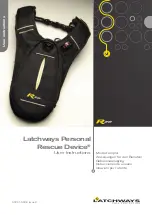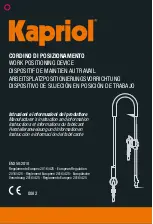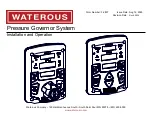
14
BAS-SVX40B-EN
Mounting and Wiring the WCI
5. Route the wires from the WCI through either:
a. The opening in the back plate (
, a).
b. The bottom exit port (
, b).
Figure 5.
Routing the wires through the WCI backplate (a) or bottom exit port (b)
6. Connect the wiring harness according to the illustration that is appropriate for your application:
Note:
Wiring between a WCI and a controller cannot exceed 656 ft (200 m). If the wiring
harness does not provide enough length, use 18 AWG (24 pF/ft max.) communication
wire (Trane purple wire, which is shielded).To extend both the comm link and the power,
use two pieces or Trane purple wire (4 conductors, 2 shields). Each shield needs to be
grounded at one spot.The shield should be grounded at the UC, the BCI, or the PM014.
If you power the WCI remotely, then you only need to run one piece ofTrane purple wire
(2 conductors, 1 shield) for the comm link. Trane recommends that you ground the
shield at the UC, the BCI, or the PM014.
Note:
•
To wire the WCI to a Tracer SC, see
.
•
To wire the WCI to a UC210, UC400, or a UC600, see
•
To wire the WCI to a BCI-I, see
.
•
To wire the WCI to a BCI-R, see
.
Note:
For detailed information, refer to the
BACnet MS/TP Wiring and Link Performance Best
Practices and Troubleshooting Guide
(BAS-SVX51)
7.
Restore power to the controller.
Important:
The WCI must be wired to the controller prior to power up in order to establish
network communication. If you cannot apply power to the WCI and the controller
at the same time, apply power to theWCI first. However, if you use a remote power
source to power the WCI, apply power to the WCI before applying power to the
unit controller.
8. The network is ready to be formed. Refer to
“Establishing the Network,” p. 18
(a)
(b)















































